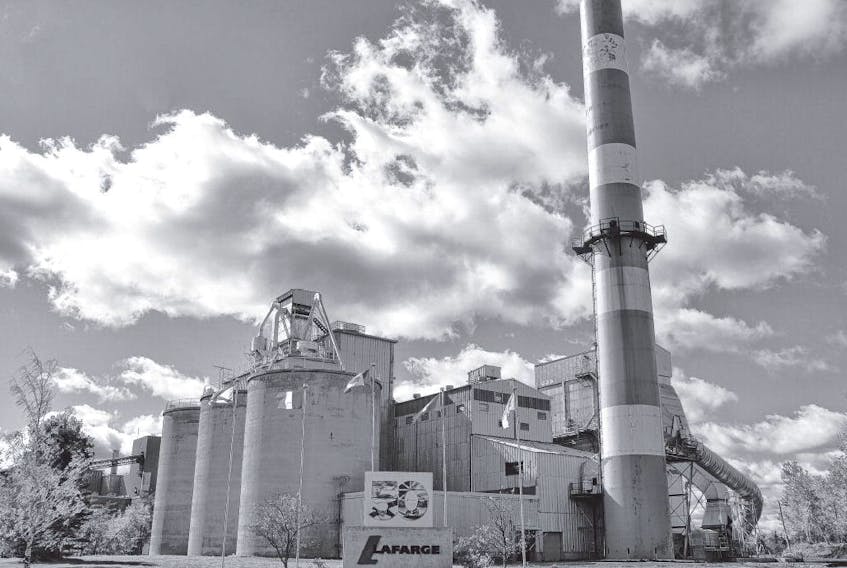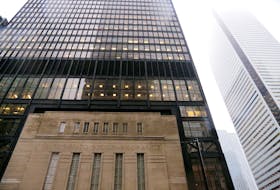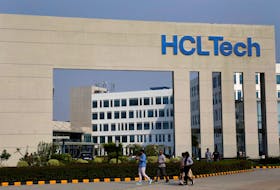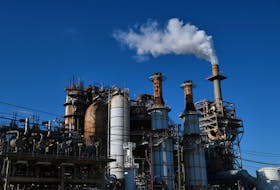The provincial environment department and Lafarge Canada are trying to block an environmental toxin expert from testifying against a plan to burn tires in Colchester County.
In separate submissions to Supreme Court Justice Denise Boudreau, the Department of Environment and Lafarge argue that Doug Hallett’s testimony at a judicial
review in March should be ruled inadmissible.
“Dr. Hallett may be a qualified expert in organic analytical chemistry and environmental biology, but he is not a qualified engineer with experience in engineering assessment or cement kiln production,” the DOE said in its submission dated Dec. 1.
The DOE also said it’s not the court’s role to revisit evidence to determine the “operational reliability” of the kiln plant in Brookfield.
Lafarge pointed to legal
precedents that bar admission of new evidence at a judicial review.
“There are no exceptional circumstances which justify deviating from the general rule against admitting new evidence on judicial review.
Dr. Hallett’s evidence is not neutral, non-argumentative general background information regarding the history of this case,”
the undated submission said.
Groups opposed to Lafarge’s tire-burning plan have retained Hallett to testify at a judicial review of the DOE’s approval of the plan scheduled for March 6-7 in Nova Scotia Supreme Court in Halifax.
The court will hear arguments for and against the admissibility of his testimony on Thursday.
Lydia Sorflaten, a spokeswoman for residents opposed to the tire-burning plan, said the DOE and Lafarge are trying to stifle information about cancer-causing chemicals that have been linked to burning tires.
“They don’t want him to testify because they don’t want to talk about . . . the things you can’t see that can harm us,” said Sorflaten, of Citizens Against the Burning of Tires, in an interview Monday.
The group has long opposed the $2-million pilot project that would burn 350,000 tires in a year as kiln fuel.
They filed a challenge in August to the Supreme Court for a judicial review of Environment Minister Iain Rankin’s approval of the plan.
The notice claims the minister’s decision failed to properly consult the public, to protect human health and to prevent pollution.
Hallett has spent his professional career testing the impact of toxic chemicals on humans and the environment.
Sorflaten said his testimony would shed light on cancer-causing chemicals such as NMDA, dioxins and furans, which have been linked to tire-burning pollutants.
The Lafarge plant already burns plastics, shingles, glycerin, spent fuel and pet coke “garbage” coal at temperatures too low to adequately reduce the resulting toxins.
“We’re especially concerned about . . . the impacts of the heavy metals and the persistent organic cancer-causing, neurologically altering compounds that (tires will increase),” she said.
“We’re saying that Dr. Hallett’s testimony is really valuable and useful,” said Mark Butler of the Ecology Action Centre, which has joined Sorflaten’s group not only in opposing the tire-burning plan but activities already in place at the plant.
Butler said the plant’s current electrostatic precipitator technology, which uses an electrical charge to pull pollutants out of emissions, isn’t adequate.
A better solution would be something called a bag house, which he compared to the bag in a vacuum cleaner that physically removes pollutants.
“ Our concern is that it’s an old plant that doesn’t have the necessary pollution control equipment in place,” he said.
A call to the environment department wasn’t returned Monday.
Lafarge said it wouldn’t comment on an issue that was before the courts.
“However, we hope to start the one-year pilot project as soon as possible to take the very positive laboratory test results achieved by the Dalhousie research team to a full-scale plant environment,” said spokeswoman Karine Cousineau in an email.
She was referring to studies done by Mark Gibson of Dalhousie’s civil and resource engineering department that conclude burning tires at the cement kiln could reduce greenhouse gas emissions.
- JOHN MCPHEE- THE CHRONICLE HERALD









